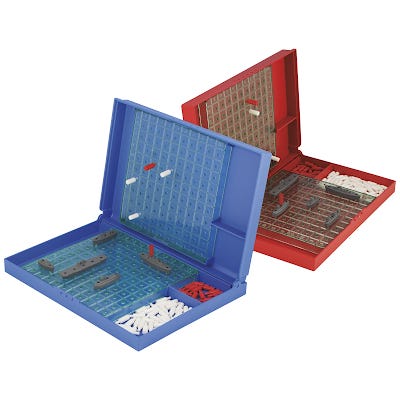The Military Connections to the Game Battleship
The popular board game and its initial manufacturer both had ties to real-life wars.
Battleship was always fun. I had the game itself but I also remember playing a pen-and-paper version that worked similarly. It was good for when the teacher was absent and we goofed around in the back of the classroom while the substitute filled out delaney cards or whatever.
Given its military trappings, it should come as no surprise that its roots sprung during wartime.
Milton Bradley
The familiar, modern version of Battleship was one of many games either made or distributed by Milton Bradley, one of the top game manufacturers in its day.
Milton Bradley (not to be confused with the baseball player) produced many popular games over the generations that have become beloved staples of American pop culture:
Candy Land,
Connect Four,
The Game of Life,
Hangman,
Mouse Trap,
Operation,
Stratego,
Trouble,
Twister, and
Yahtzee, among many others.
Bradley the founder, a Maine native, was a mechanical draftsman in Massachusetts from the mid-nineteenth century. He went into lithography but struggled with it. In 1860 he developed an early version of Life, which met with greater success. (Fun fact: Life uses a spinner instead of dice because to Bradley, dice connoted gambling.)
During the Civil War, Bradley created games for bored soldiers. His company grew. An early advocate for the concept of kindergarten, his games catered more and more to children, such as croquet sets and jigsaw puzzles.
After Bradley’s death in 1911, his successors expanded the business. During World War II, MB built universal joints used for the landing gear of fighter planes and supplied game kits for soldiers. With the advent of television, they created versions of game shows such as Concentration.
In 1960 MB released an updated centennial version of Life. In the seventies and eighties, they expanded into computerized games such as Simon.
By 1984, Hasbro bought MB.
Playing Battleship
Battleship is a head-to-head match against two players.
The players arrange their ships on a 10x10 grid, hidden from each other. The rows and columns of the grid are identified by letters and numbers.
One player calls out a coordinate on the grid by letter and number. If a ship lies within that coordinate, it’s a hit. If not, it’s a miss. Both sides keep track with markers, red for a hit and white for a miss. The goal is to sink your opponent’s fleet before your opponent does it to you first.
The MB edition released in 1967 had two plastic game boards with grids. Ships of different sizes—carrier (five lengths), battleship (four), cruiser/destroyer (three), submarine (three) and destroyer/patrol boat (two)—came attached to pegs. You screwed them onto the grid board horizontally. The white and red pegs to mark hits and misses went into the board vertically.
L’Attaque—an early ancestor?
The precedent for Battleship may have been a French war game from 1909 called L’Attaque.
Thirty-six pieces on a 9x10 grid each had secret numeric values. Individual pieces moved onto opposing squares. The piece with the highest value captured the lesser. The goal was to capture the opposing flag.
L’Attaque is closer to the MB game Stratego, developed in 1946.
Pen-and-paper origins
The game we know as Battleship began as a pen-and-paper game. During World War I, a guy named Clifford von Wickler created a naval warfare game popular with French and Russian soldiers.
WW1 sea battles are mostly remembered for the German submarines, or U-boats, which caused so much uncertainty. When one sank the British vessel Lusitania, which carried American passengers, it eventually led to American involvement in the war.
Von Wickler’s game caught on. By 1931, the Starex company released a version of the game called Salvo. In that version, each player takes three shots at their opponent instead of one, but the player doesn’t know where the shots landed, if at all. MB released a similar pen-and-pencil game in 1962 called Broadside.
By 1967 Ed Hutchins at MB developed the familiar version of Battleship with plastic gameboards we know today. A decade later MB released an electronic talking version.
The movie
And then there was the 2012 film version of Battleship… which involved aliens. But perhaps the less said about it, the better.
@byrichwatson
—————————
Have you played Battleship?


